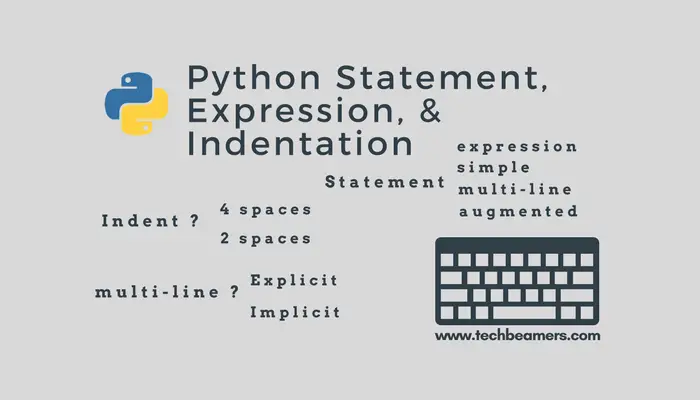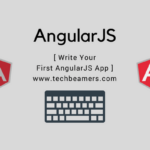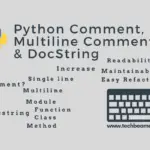A Python statement is the most basic executable element of the code. The other entities around it are indentation and expressions. In this tutorial, we’ll explain each of them in detail and the difference between them. This tutorial also contains several examples to explain the concept more clearly.
Understand Python Statement, Indentation, and Expression
We’ll walk you through many topics in this tutorial. Starting from a single statement to multiline statements, we’ll cover how to use indentation and expressions in your Python programs.
We’ll try to answer questions like “Why is indentation so important in Python?”, “How many spaces is an indent in Python?” and so on.
What is a Statement in Python?
A statement in Python is a logical instruction that a Python interpreter can read and execute. In Python, it could be an expression or an assignment statement.
The assignment statement is fundamental to Python. It defines the way an expression creates objects and preserves them.
Let’s now find out more details on this topic.
What is an Expression in Python?
An expression is a type of Python statement that contains a logical sequence of numbers, strings, objects, and operators. The value in itself is a valid expression and so is a variable.
Using expressions, we can perform operations like addition, subtraction, concatenation, and so on. It can also have a call to a function which evaluates results.
Also Read: What are Keywords in Python?
Examples
# Using Arithmetic expressions >>> ((10 + 2) * 100 / 5 - 200) 40.0
# Using functions in an expression >>> pow(2, 10) 1024
# Using eval in an expression >>> eval( "2.5+2.5" ) 5.0
Simple Assignment Statement
In a simple assignment, we create new variables, assign values, and modify them. This statement provides an expression and a variable name as a label to preserve the value of the expression.
# Syntax variable = expression # LHS <=> RHS
Let’s now take a close look at three types of assignment statements in Python and see what’s going on under the hood.
Case-1: The right-hand side (RHS) is just a value-based expression.
Let’s consider the most basic form of assignment in Python.
>>> test = "Learn Python"
Python will create a string “Learn Python” in memory and assign the name “test” to it. You can confirm the memory address with the of a built-in function known as id().
>>> test = "Learn Python" >>> id(test) 6589040
The number is the address of the location where the data lives in memory. Now, here are a few interesting points which you should know.
1. If you create another string with the same value, Python will create a new object and assign it to a different location in memory. So this rule would apply to most of the cases.
>>> test1 = "Learn Python" >>> id(test1) 6589104 >>> test2 = "Learn Python" >>> id(test2) 6589488
2. However, Python will also allocate the same memory address in the following two scenarios.
- The strings don’t have whitespaces and contain less than 20 characters.
- In the case of Integers ranging between -5 to +255.
This concept is known as Interning. Python does it to save memory.
Case-2: The right-hand side (RHS) is a current Python variable.
Let’s take up the next type of assignment statement where the RHS is a current Python variable.
>>> another_test = test
The above statement won’t trigger any new allocation in memory. Both the variables would point to the same memory address. It’s like creating an alias for the existing object. Let’s validate this by using the id() function.
>>> test = "Learn Python" >>> id(test) 6589424 >>> another_test = test >>> id(another_test) 6589424
Case-3: The right-hand side (RHS) is an operation.
In this type of statement, the result would depend on the outcome of the operation. Let’s analyze it with the following examples.
>>> test = 2 * 5 / 10 >>> print(test) 1.0 >>> type(test) <class 'float'>
In the above example, the assignment would lead to the creation of a “float” variable.
>>> test = 2 * 5 >>> print(test) 10 >>> type(test) <class 'int'>
In this example, the assignment would lead to the creation of an “int” variable.
Augmented Assignment Operator
You can combine arithmetic operators in assignments to form an augmented assignment statement.
Check out the below examples for the augmented assignment operator.
x += y
The above statement is a shorthand for the below simple statement.
x = x + y
The next one is a bit clearer example where we are appending new elements to the tuple.
>>> my_tuple = (10, 20, 30) >>> my_tuple += (40, 50,) >>> print(my_tuple) (10, 20, 30, 40, 50)
Let’s take another example that has a list of vowels. It demonstrates the addition of missing vowels to the list.
>>> list_vowels = ['a','e','i'] >>> list_vowels += ['o', 'u',] >>> print(list_vowels) ['a', 'e', 'i', 'o', 'u']
Multi-line Statement in Python
Usually, every Python statement ends with a newline character. However, we can extend it over to multiple lines using the line continuation character (\).
Also Read: Multiline Strings in Python
And, Python gives us two ways to enable multi-line statements in a program.
Explicit line continuation
When you right away use the line continuation character () to split a statement into multiple lines.
Example
# Initializing a list using the multi-line statement >>> my_list = [1, \ ... 2, 3\ ... ,4,5 \ ... ] >>> print(my_list) [1, 2, 3, 4, 5]
# Evalulate an expression using a multi-line statement >>> eval ( \ ... " 2.5 \ ... + \ ... 3.5") 6.0
Implicit line continuation
Implicit line continuation is when you split a statement using either parentheses ( ), brackets [ ], or braces { }. You need to enclose the target statement using the mentioned construct.
Example
>>> result = (10 + 100 ... * 5 - 5 ... / 100 + 10 ... ) >>> print(result) 519.95
Another Example
>>> subjects = [ ... 'Maths', ... 'English', ... 'Science' ... ] >>> print(subjects) ['Maths', 'English', 'Science'] >>> type(subjects) <class 'list'>
Python Indentation
Many of the high-level programming languages like C, C++, and C# use braces { } to mark a block of code. Python does it via indentation.
A code block that represents the body of a function or a loop begins with the indentation and ends with the first unindented line.
How many spaces is an indent in Python?
Python style guidelines (PEP 8) state that you should keep an indent size of four. However, Google has its unique style guideline which limits indenting up to two spaces.
So you too can choose a different style, but we recommend following the PEP8.
Why is indentation so crucial in Python?
Most programming languages provide indentation for better code formatting but don’t enforce it.
However, in Python, it is mandatory to obey the indentation rules. Typically, we indent each line by four spaces (or by the same amount) in a block of code.
In the examples of the previous sections, you might have seen us writing simple expression statements that didn’t have the indentation.
However, for creating compound statements, the indentation will be utmost necessary.
Example
def demo_routine(num):
print('I am a demo function')
if num % 2 == 0:
return True
else:
return False
num = int(input('Enter a number:'))
if demo_routine(num) is True:
print(num, 'is an even number')
else:
print(num, 'is an odd number')Now, also see a scenario when undesired indentation causes an error. So let’s try indenting a simple expression statement.
>>> 6*5-10 File "<stdin>", line 1 6*5-10 ^ IndentationError: unexpected indent
Short Summary
If you plan to become a professional Python programmer who follows good coding practices, knowing about Python statements, expressions, and indentation is a must.
Hence, get the most out of this tutorial, practice with the examples, and use Python in the interactive mode. It has a reasonable command history capability, so you can use the up-arrow key to recover a previous statement.
If you learned something new today, then don’t mind sharing it further. And, follow us on our social media accounts to get quick updates.
Happy Learning,
TechBeamers









